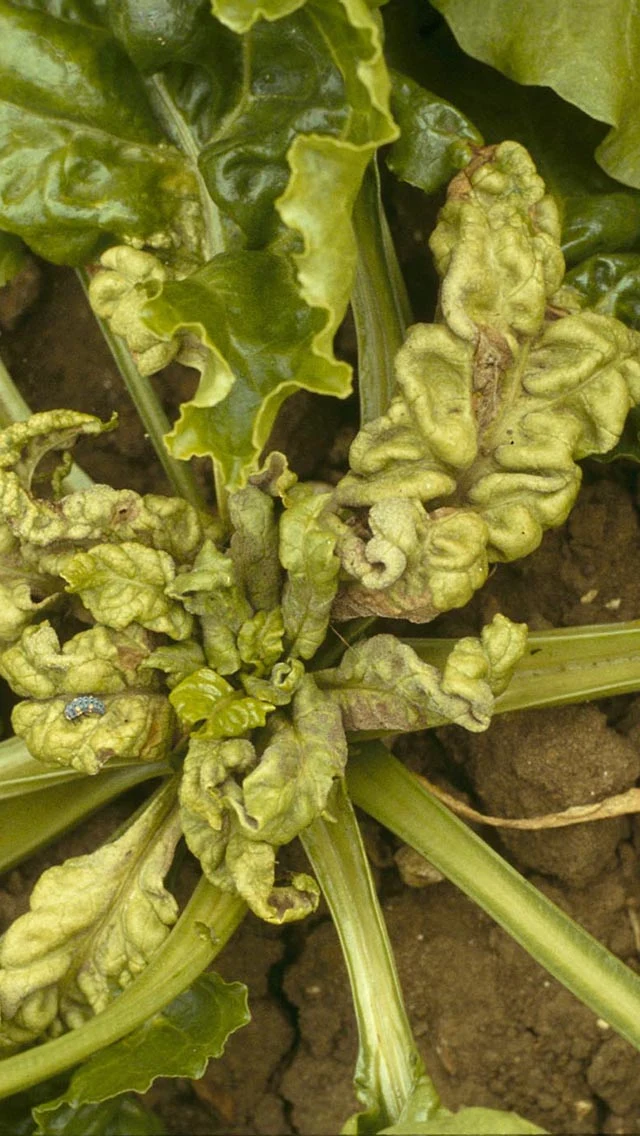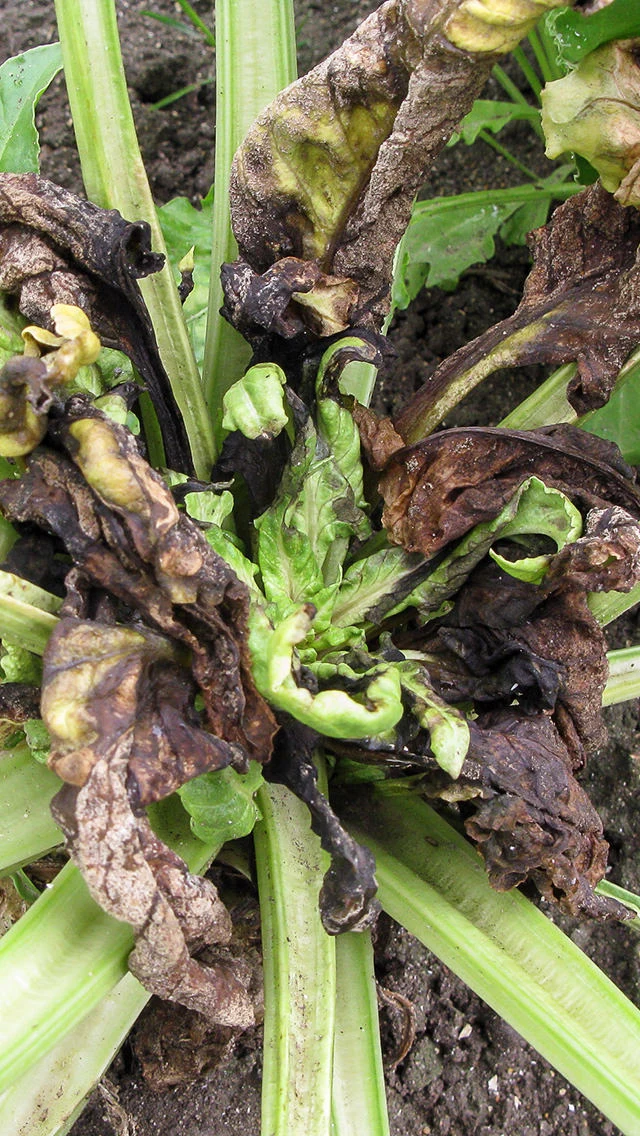
Downy Mildew - Beet
Peronospora farinosa
Pathogen
Fungus
Hosts
Sugar beet, beetroot.
Symptoms
Heart leaves are light green, thickened, distorted and develop a purplish downy growth. Older leaves may turn yellow similar to the symptoms of virus yellows.
Development
The disease is spread by air-borne spores from infected beet seed crops, mangold seed crops, groundkeepers, old clamps, cleaner-loading sites or wild beet. Infection can also arise from resting spores (oospores) in the soil.
Favourable Factors
Cool, humid weather following crop emergence.
Importance
Infection in June can seriously affect root yield, whereas infection in July will reduce sugar content. Heavy losses due to downy mildew have been reported in seed crops grown on the continent.
Whilst it can be a serious problem in some countries, it has not been a major problem in the UK as damage is usually restricted to odd plants in fields.
Control
Avoid more susceptible varieties
Separate root and seed crops
Remove ground keepers, growth on old clamps and wild beet
Beet in set-aside should be controlled before sowing beet in neighbouring fields
No fungicides are available for control of downy mildew in sugar beet.

Severe infection (© Blackthorn arable)


